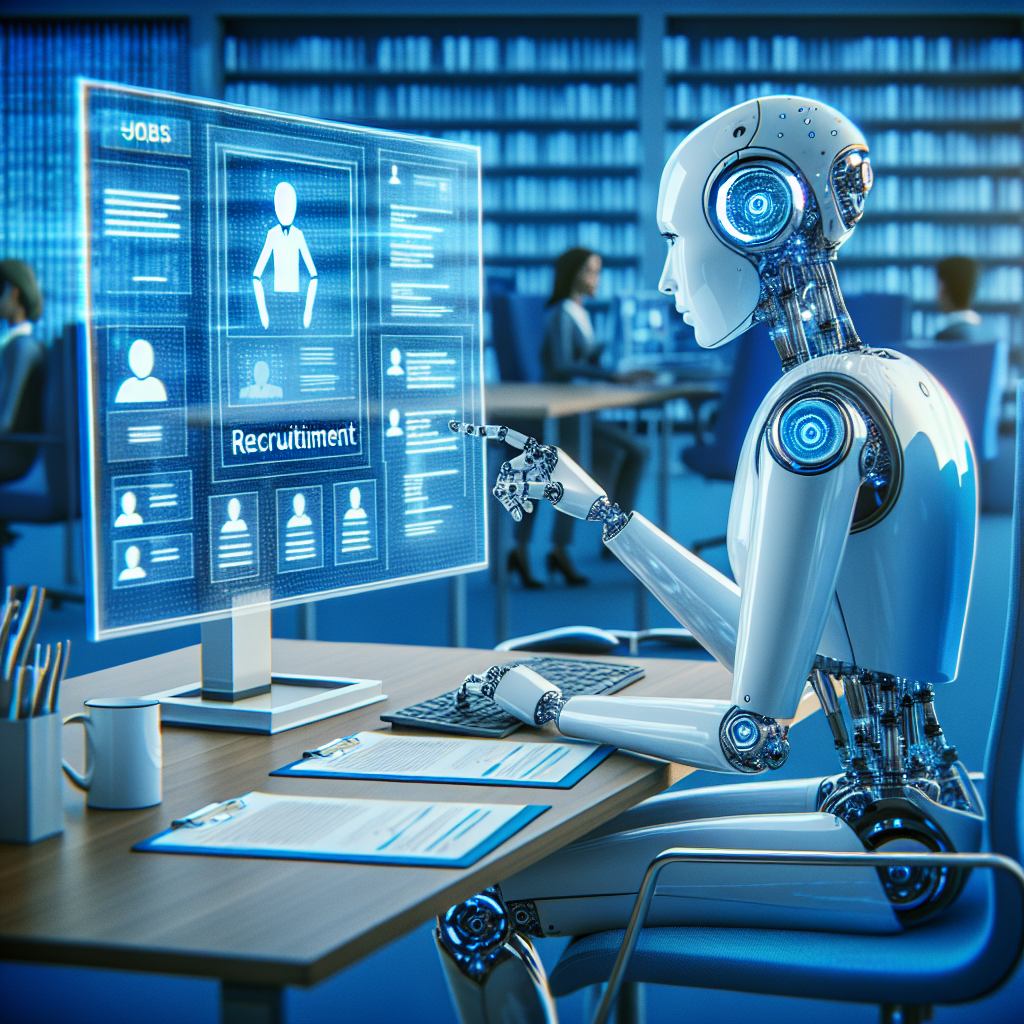The Rise of AI Solutions in HR and Recruitment
In recent years, the use of artificial intelligence (AI) in various industries has been on the rise. One area that has seen significant growth in the adoption of AI solutions is human resources (HR) and recruitment. AI technology has the potential to transform the way organizations attract, hire, and retain talent, making the recruitment process more efficient and effective. In this article, we will explore the rise of AI solutions in HR and recruitment and the benefits they offer to organizations.
Benefits of AI in HR and Recruitment
AI solutions in HR and recruitment offer a wide range of benefits to organizations. Some of the key advantages include:
1. Streamlined Recruitment Process: AI can help automate repetitive tasks in the recruitment process, such as screening resumes, scheduling interviews, and conducting background checks. This allows HR professionals to focus on more strategic tasks, such as building relationships with candidates and developing talent pipelines.
2. Improved Candidate Matching: AI technology can analyze large volumes of data to identify the best candidates for a particular role. By considering factors such as skills, experience, and cultural fit, AI algorithms can help recruiters make more informed hiring decisions.
3. Enhanced Candidate Experience: AI-powered chatbots can provide instant responses to candidates’ questions, reducing the time it takes to communicate with applicants. This can improve the candidate experience and increase the likelihood of attracting top talent to the organization.
4. Diversity and Inclusion: AI can help reduce bias in the recruitment process by focusing on objective criteria and removing subjective judgments. This can lead to a more diverse and inclusive workforce, as AI algorithms are not influenced by unconscious biases.
5. Predictive Analytics: AI technology can analyze historical data to predict future trends in recruitment and identify areas for improvement. By using predictive analytics, organizations can make data-driven decisions and optimize their recruitment strategies.
Popular AI Solutions in HR and Recruitment
There are several AI solutions available in the market that cater to different aspects of HR and recruitment. Some of the popular AI tools include:
1. Applicant Tracking Systems (ATS): ATS software uses AI algorithms to screen resumes, identify qualified candidates, and track applicants throughout the recruitment process. This helps HR professionals manage large volumes of applications more efficiently.
2. Chatbots: Chatbots powered by AI technology can interact with candidates in real-time, answer their questions, and provide personalized recommendations. Chatbots can also schedule interviews, send reminders, and gather feedback from candidates.
3. Video Interviewing Platforms: AI-powered video interviewing platforms use facial recognition technology to analyze candidates’ facial expressions, tone of voice, and body language during interviews. This can help recruiters assess candidates’ soft skills and cultural fit more effectively.
4. Employee Engagement Tools: AI tools can analyze employee feedback surveys, performance reviews, and other data to identify patterns and trends related to employee engagement. This can help organizations improve employee satisfaction and retention rates.
5. Onboarding Solutions: AI-driven onboarding solutions can automate the onboarding process, provide personalized training materials, and track new employees’ progress. This can help organizations reduce time-to-productivity and improve employee retention.
Frequently Asked Questions (FAQs) about AI in HR and Recruitment
Q: Will AI replace human recruiters in the future?
A: While AI technology can automate certain tasks in the recruitment process, such as resume screening and scheduling interviews, human recruiters play a critical role in building relationships with candidates, assessing cultural fit, and making final hiring decisions. AI is meant to augment, not replace, human recruiters.
Q: How can organizations ensure that AI algorithms are unbiased in the recruitment process?
A: To reduce bias in AI algorithms, organizations should regularly review and update the data used to train the algorithms, test the algorithms for bias, and provide diversity training to employees involved in the recruitment process. Transparency and accountability are key to ensuring that AI technology is used ethically.
Q: Are AI solutions expensive to implement in HR and recruitment?
A: The cost of implementing AI solutions in HR and recruitment can vary depending on the size of the organization, the complexity of the technology, and the level of customization required. However, many AI tools offer flexible pricing options and can be scaled to meet the needs of organizations of all sizes.
Q: How can organizations measure the effectiveness of AI solutions in HR and recruitment?
A: Organizations can measure the effectiveness of AI solutions in HR and recruitment by tracking key performance indicators (KPIs) such as time-to-fill, cost-per-hire, candidate quality, and employee retention rates. By analyzing these metrics, organizations can determine the impact of AI technology on their recruitment processes.
Q: What are the potential risks of using AI in HR and recruitment?
A: Some potential risks of using AI in HR and recruitment include data privacy concerns, algorithmic bias, and job displacement. Organizations should carefully consider these risks and implement appropriate safeguards, such as data encryption, bias detection tools, and reskilling programs for employees affected by automation.
In conclusion, the rise of AI solutions in HR and recruitment offers organizations the opportunity to transform their talent acquisition and management processes. By leveraging AI technology, organizations can streamline recruitment, improve candidate matching, enhance the candidate experience, promote diversity and inclusion, and make data-driven decisions. As AI continues to evolve, organizations that embrace these innovations will be better positioned to attract and retain top talent in an increasingly competitive job market.

